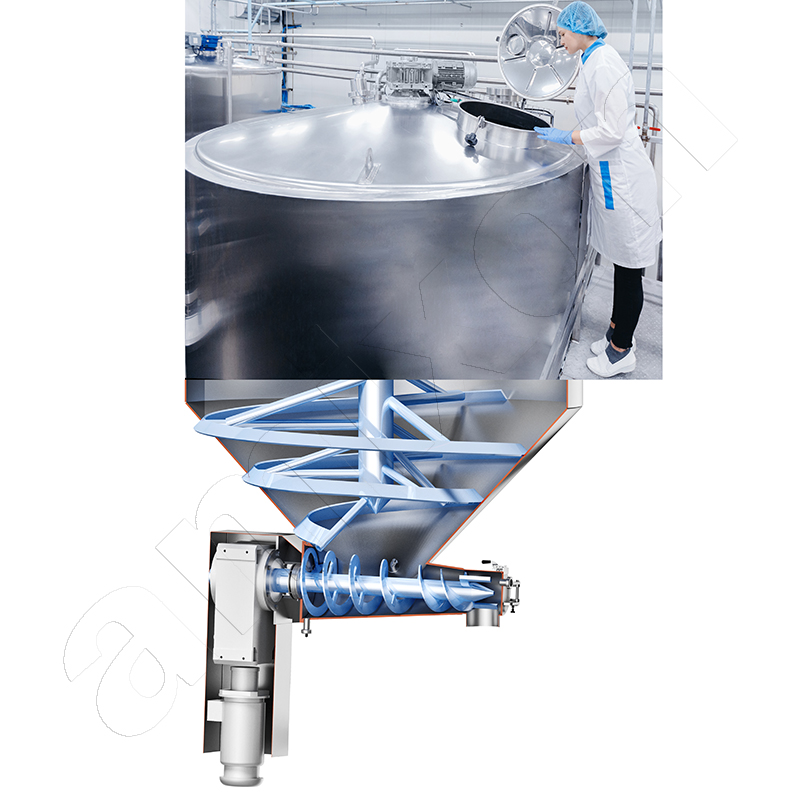
Dosing screw
A dosing screw is a mechanical conveying device for the controlled discharge of bulk materials. It is used when a defined quantity of a powder, granulate or fine-grained material needs to be dosed precisely in terms of time and quantity - e.g. in mixing, filling or reaction processes.
Typically, a dosing screw consists of a rotating screw that turns in a tube or trough. Particularly accurate feeders work with a progressively increasing thread pitch - this allows the filling level of the screw to be better defined and a more even discharge rate to be achieved.
Use for demanding products
amixon® manufactures, among other things, large-volume fermenters and mixing reactors, which are equipped on their underside with precisely operating dosing systems are equipped. These enable the Safe and virtually residue-free discharge Even extreme bad flowing substances - be they dry, moist, cohesive or viscoplastic. This means that even demanding processes can be reliably controlled where conventional dosing systems would reach their limits.
Alternative dosing systems:
- Vibrating chute: Conveys and doses bulk material by means of a vibrating movement. Well suited for free-flowing products that cannot segregate.
- Lip conveyor: Closes the opening of a container on the underside using flexible closing strips. The "lips" are opened in a controlled manner for dosing, while the bottom of the container is supported by a flexing movement.
- Vertical impeller: Used, for example, in spreaders or in spray dryers. The rotating wheel distributes powder or granules evenly, dosed by speed and height adjustment.
- Rotary valve: Horizontally mounted dosing unit. The bulk material falls from above into chambers of the rotating cellular wheel and is discharged downwards. Frequently used for powdery or free-flowing products - also for pressure-tight separation of systems.
